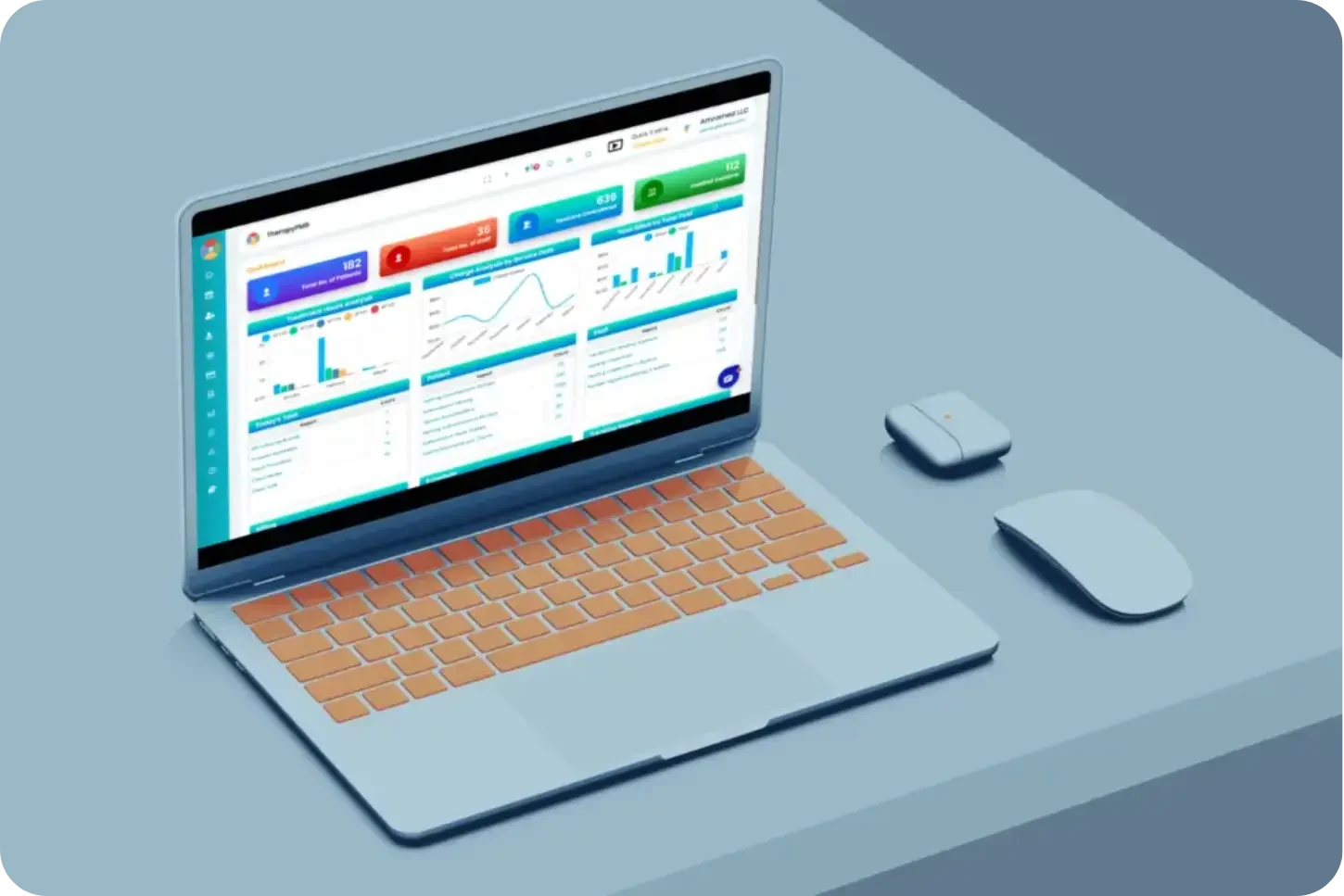
Are You Still Using Manual Billing Methods for Your ABA Practice? It’s Time to Upgrade to Automated Billing for ABA Therapy
Are You Still Using Manual Billing Methods for Your ABA Practice? It’s Time to Upgrade to Automated Billing for ABA Therapy
In today’s fast-paced healthcare environment, efficiency isn’t just a luxury—it’s a necessity. For ABA (Applied Behavior Analysis) providers, this means embracing innovative solutions that streamline operations, reduce errors, and improve cash flow. If your practice is still relying on manual billing processes, you might be unknowingly holding back your growth and impacting the quality of care you provide.
The Current State of ABA Billing: A Data-Driven Perspective
Over the past ten years, the ABA sector has seen significant expansion. According to MarketWatch, the global ABA market was valued at approximately USD 4 billion in 2023 and is expected to grow at a compound annual growth rate (CAGR) of around 4.8% from 2024 to 2032. This rapid expansion reflects increased awareness, insurance coverage, and demand for high-quality behavioral health services.
However, with growth comes complexity. A 2022 survey by the American Psychological Association revealed that over 60% of behavioral health practices still rely heavily on manual billing methods. These manual systems include paper claims, spreadsheets, and basic software that require significant human intervention.
While manual billing might seem manageable for small practices, the data shows that it introduces inefficiencies, errors, and delays that can hinder a practice’s sustainability. For example:
- Error Rates: Studies estimate that manual claims processing has error rates as high as 10-15%, leading to claim rejections and delayed reimbursements.
- Reimbursement Delays: Practices report an average delay of 30 to 60 days in receiving payments due to manual claim processing.
- Revenue Loss: According to the Healthcare Financial Management Association, practices lose approximately 5-10% of revenue annually due to billing errors and claim denials.
These figures highlight the urgent need for a transformation in billing practices—enter automated billing services.
Why Manual Billing Is No Longer Sustainable
Time-Consuming and Error-Prone
Manual billing involves tedious data entry, verifying insurance details, and submitting claims by hand. This process can take up to 20 hours per week for a small to medium-sized practice, according to industry estimates. That time could be better spent enhancing patient care or growing your practice.
Furthermore, manual data entry is vulnerable to human error—misspelled names, incorrect codes, or missing information—resulting in claim denials. The Centers for Medicare & Medicaid Services (CMS) reports that up to 80% of denied claims are due to simple coding errors or administrative mistakes.
Delays in Reimbursement
Manual billing processes tend to delay reimbursements, which can strain cash flow and hinder smooth operations. Practice owners often face cash flow gaps, making it difficult to invest in new equipment, staff, or training.
Increased Administrative Burden and Stress
Manual billing creates stress among staff and clinicians. They spend valuable time on paperwork rather than focusing on delivering therapy. Excessive administrative tasks can cause staff fatigue and dissatisfaction, which may negatively influence the quality of patient care..
The Power of Automated Billing Services: A Data-Backed Solution
Research shows that practices adopting automated billing systems experience significant improvements:
- Automated billing solutions include validation features that can decrease errors by as much as 80%.
- Faster reimbursements: Claims processed electronically are typically reimbursed within 5-10 days, a stark contrast to manual delays.
- Increased revenue: Practices report an average revenue increase of 10-20% after switching to automated billing.
Key Benefits of Automated Billing Services
1. Enhanced Practice Efficiency
Automation handles the entire billing workflow—covering claim generation, submission, monitoring, and follow-up—efficiently and seamlessly. By automating repetitive tasks, practices save up to 70% of administrative time. This enables staff to focus on patient engagement and quality care.
2. Improved Data Accuracy
Automated systems incorporate real-time validations, ensuring that insurance details, codes, and documentation are correct before submission. This drastically reduces claim rejections and rework, saving time and money.
3. Faster and Reliable Reimbursements
Electronic claim submission expedites reimbursement, often reducing the cycle from 30 days to just a week. Faster payments improve cash flow, allowing your practice to grow sustainably.
4. Real-Time Tracking and Reporting
Automated billing platforms provide dashboards and reports that give instant insights into outstanding claims, revenue trends, and payer performance. This transparency helps in strategic planning and financial management.
5. Better Client Outcomes and Satisfaction
When administrative burdens are lifted, therapists can dedicate more time to their clients, improving therapy outcomes. Clients appreciate prompt, seamless billing experiences, boosting their overall satisfaction.
How to Transition to Automated Billing Services Smoothly
Switching from manual to automated billing might seem intimidating, but with a strategic approach, it can be seamless and highly beneficial.
1. Choose the Right Software
Look for a dedicated therapy practice management platform that offers integrated automated billing services. Features to consider include:
- Insurance claim submission and tracking
- Code validation and compliance checks
- Reimbursement management
- Customizable reporting dashboards
- User-friendly interface
2. Collaborate with Software Providers
Partner with a reputable software provider that offers hands-on onboarding, training, and ongoing support. A good partner will help tailor the system to your practice’s specific needs.
3. Develop a Clear Implementation Plan
Outline a detailed plan with timelines, responsibilities, and milestones. Engage your staff early to foster buy-in and reduce resistance.
4. Invest in Staff Training
Offer thorough training programs to ensure your team is confident and proficient in using the new platform, utilizing resources like step-by-step guides, video tutorials, and dedicated support channels.
5. Monitor and Optimize
Continuously assess the system’s performance and solicit input from your staff, making improvements to boost accuracy and operational efficiency.
Addressing Common Concerns About Automated Billing
“Will it be expensive to switch?”
While there is an upfront investment, the ROI is clear—fewer errors, faster payments, and saved time pay off quickly. Plus, many systems offer scalable pricing models suited for practices of all sizes.
“Is it difficult to learn?”
Most modern automated billing platforms are designed with user-friendliness in mind. Training and ongoing support ensure a smooth transition.
“Will it be secure?”
Reputable providers use advanced encryption and security protocols to protect sensitive patient and financial data, complying with HIPAA and other regulations.
Why TherapyPM Is Your Best Choice for Automated Billing Services
As a leader in practice management technology, TherapyPM provides an all-in-one platform tailored specifically for ABA and pediatric therapy clinics. Our automated billing services are built to simplify insurance claims, reduce errors, and accelerate reimbursements.
Key Features of TherapyPM:
- Seamless integration with your existing workflows
- Automated claim submission and follow-up
- Real-time dashboards for financial insights
- Built-in validation checks for accurate coding
- Secure, HIPAA-compliant data handling
- Dedicated support and training
Our platform has helped hundreds of practices improve efficiency, increase revenue, and focus more on patient care.
Take the Next Step Today: Try TherapyPM for Free
Are you ready to experience the benefits of automated billing services firsthand? We’re offering a free trial to help your practice discover how TherapyPM can transform your billing process. Get started now with our risk-free trial
Enjoy:
- Easy onboarding
- Hands-on experience with automated claim submission
- Real-time insights into your billing performance
- Ongoing support designed to help you fully leverage the platform’s capabilities.
The Future of ABA Practice Management Is Automated
As the ABA industry continues to grow, so does the complexity of managing insurance claims and reimbursements. Practices that adapt to technological advancements will have a competitive edge—improving efficiency, reducing errors, and increasing revenue.
Remember: Manual billing is a thing of the past. Embracing automated billing services like TherapyPM isn’t just an upgrade; it’s a strategic move toward a more sustainable, profitable, and satisfying practice.
Final Thoughts
The data speaks for itself: practices that switch to automated billing services see tangible improvements in revenue, efficiency, and staff satisfaction. The transition may seem daunting, but with the right partner and a solid plan, it’s well worth the effort.
Don’t let outdated processes hold your practice back. Experience the power of automated billing with TherapyPM and unlock your practice’s full potential today. Start your free trial now!
Transform your ABA practice—streamline billing, reduce errors, and focus on what truly matters: delivering exceptional care.
Related Posts

How to Reduce No-Shows with Better Therapy Scheduling: A Complete Guide for Therapy Clinics
How to Reduce No-Shows with Better Therapy Scheduling: A Complete Guide for Therapy Clinics Therapy scheduling is one of the most powerful growth levers inside

Operational Design for High-Growth Therapy Clinics: A Complete Guide for ABA, OT, Speech, Mental Health & Pediatric Practices
Operational Design for High-Growth Therapy Clinics: A Complete Guide For All Therapy Practice Therapy practices don’t scale because they add more clinicians. They scale because



